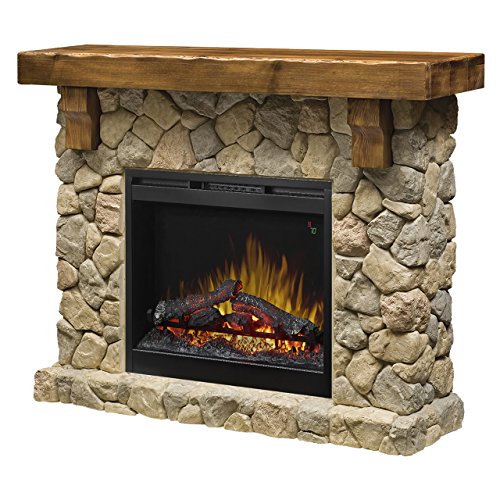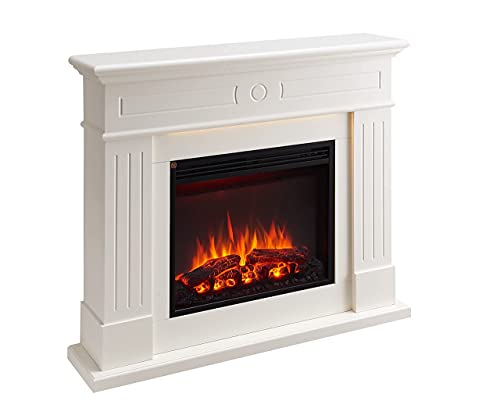11 Ways To Completely Sabotage Your Fireplace
페이지 정보
작성자 Esther Man… 메일보내기 이름으로 검색 작성일23-12-15 11:24 조회18회 댓글0건관련링크
본문
 What Are Fireplace Accessories?
What Are Fireplace Accessories? fireplaces for sale in my area; pop over here, are central to many homes they provide warmth and comfort throughout the day and at night. They also enhance the beauty and value of the property.
fireplaces for sale in my area; pop over here, are central to many homes they provide warmth and comfort throughout the day and at night. They also enhance the beauty and value of the property.Whether your fireplace needs to be repainted or just simple repairs, these projects can often be completed by homeowners. Certain tasks that require gas should be left to experts.
The Hearth
The hearth is the noncombustible flooring for the fireplace or wood stove. It could be an elevated area or simply the foundation of the fireplace. The term "hearth", which is used to describe all the components of a fireplace, including the firebox, the raised floor and mantel, as well as the chimney, is a common term. It is essential to keep in mind that there are specific fire safety rules concerning the construction of the fireplace and its accessories. Check with your local authority for more details.
They can be made of cement, bricks, or stone. They are a fantastic focal feature for any room. They are designed to form a barrier between the fire and the flooring and protect against accidental fires caused by stray logs or embers. They can also be used to store fireplace tools wood, tools, and other supplies.
Archaeological studies have shown that hearths played a significant role in the early human era. Many believe that hearths provided warmth, light, food, and protection.
A hearth can be a source of serious health issues if it is not maintained properly. Smoke inhalation can increase blood levels of nitrogen which hinders red blood cells (methemoglobinemia) from transporting oxygen into tissues. It can cause nausea, dizziness and loss of consciousness at high concentrations.
Hearths were traditionally constructed out of stone, but they are nowadays constructed out of brick or concrete and can be in a variety of sizes and shapes. Some cooking fireplaces for sale come with hearths that are able to cover the entire wall and others are smaller and solely decorative elements that cover the fireplace's opening. The material used to construct the hearth has a significant impact on its appearance cost, as well as its the resistance to heat.
The Surround
A fireplace surround (also known as a mantel) is the frame that is placed above the hearth, and is a part of the atmosphere of a room. Apart from its aesthetic value, it also serves as a practical element as it keeps combustible substances away from the hearth and disperses heat into the room. It can also be used as an extra shelf for household items such as mirrors or paintings.
Based on the type of fireplace, there are several materials that can be used for the surround. Certain surrounds are not combustible, while others must meet federal and local fire codes regarding clearance distances from items that are combustible.
Popular choices for the surround are brick, stone, or concrete. Some stone surrounds are carved using decorative features such as bevels or bolection moulding. These stone surrounds may include plinths or cornices. These features can give an elegant appearance that can complement the style of the house.
Plaster is another option. This material is made from a mix of sand, cement and water and can be crafted to match any style of architecture. A plaster surround, for example, can complement an Mission style home.
Tile is the best option for a wall. Tiles are available in a variety of designs and colors. It can be used to accent the surrounding area, or it can be extended across the entire wall to create a dramatic focal point. It is also a good option for homes with a contemporary or modern style.
The surround is the first thing guests notice when they enter a living room. It is crucial to choose a piece to set the tone for your home and also to enhance the value of your home.
The Firebox
The firebox is the space behind a fireplace's opening where a fire can be built and maintained. It's usually surrounded by a type of chimney that allows the smoke to escape through. Usually, these traditional structures burn wood but they can also burn gas, such as natural gas or propane.
Whatever fuel you are using the firebox is the place the location where the combustion takes place and needs to be properly maintained to ensure safety and efficiency. The grate in the hearth as well as a fire poker and an air damper are all important parts of the firebox for the proper operation.
It is essential to regularly clean your fireplace. This includes keeping the firebox in good order and the lining. The interior of the fireplace will be soiled by soot and dust due to its continuous exposure to high temperatures. To do this, you can use a wire brush or a scraper to get rid of the caked-on soot and ash.
It's also a good idea to utilize steel slag or steel to line the inside of the firebox to ensure longevity and durability. These types of metals can resist corrosion and will not be rusty. They will also provide a more uniform heat distribution and will last longer.
You can also add visual appeal to your fireplace in my area by adding decorative fire logs and lava stones. Some people prefer modern decorative glass instead. Make sure that whatever you're using to make your fireplace is UL approved for safety. This includes the fireplace as well as any accessories and decorations you put on it.
The Burner
Burners are a popular method to add heat and aesthetics to any space. These fireplace accessories are available in a variety of sizes and shapes, making it easy to locate the ideal one for your home. Some even come with remotes, which means you can control the flame from any place in the room. Fire burners are also quite safe to use, which makes them a great option for indoor and outdoor spaces.
There are many types of burners. Each has its own pros and cons. Some are more expensive than others, fireplaces in my area but all offer a range of benefits for your home. Certain types of burners are safer than others, and can be used with or without a chimney. No matter what kind of burner you select, always follow the instructions provided in the manual. This will ensure that the burner is properly installed and is in compliance to all state and local laws.
While burning wood is the most popular method of enjoying a fireplace, it isn't always the most practical. The smoke and soot created by burning wood can be dangerous to you and your family. Ethanol fire burners are on the other hand, produce only water vapor and minimal CO2 which is a lot more environmentally friendly.
Another benefit of having a fireplace is that it could be beneficial in the event of an outage. In winter, a lot of snow and ice can accumulate on trees, which may cause them to fall and slam down power lines that hang below. If the power in your home goes out it is possible to use a fireplace to keep warm and cook food. This is a major plus for those who want to be prepared for the unexpected.
The Flu
The flue is an inner tunnel in a chimney, which carries the gases and smoke from your fireplace away from your home. It is also an essential component for a safe, efficient fire. A flue creates a breeze that pulls air into the fire. This lets the fuel burn completely and reduces smoke.
The flue's draft keeps the hot gases emitted by the fire from venting into your home. Instead they are taken outside to cool. This controlled venting that prevents carbon monoxide poisoning.
Your chimney needs to be inspected regularly to check for leaks and blockages. The flue pipe, which is a steel tube or duct that runs through the middle of the chimney, should be cleaned with special cleaning chemicals and equipment. The metal brush, a drill fitted with a brick bit and masking tape are all required to remove any soot or tarnish that has been stuck on the walls of the chimney flue pipe.
Close the flue when you're not using your fireplace in order to prevent the conditioned air from escape. It also helps prevent wind or rain from getting into the chimney and damaging your fireplace, wood stove, or gas furnace.
The damper can be closed and opened with a latch or handle. It is located on the uppermost part of your fireplace close to the flue tile or pipe. The damper is designed to keep a fireplace's flue open while the fire is burning. However it should be shut whenever the fireplace is not being used. This can help you save money on your energy bills.
댓글목록
등록된 댓글이 없습니다.

